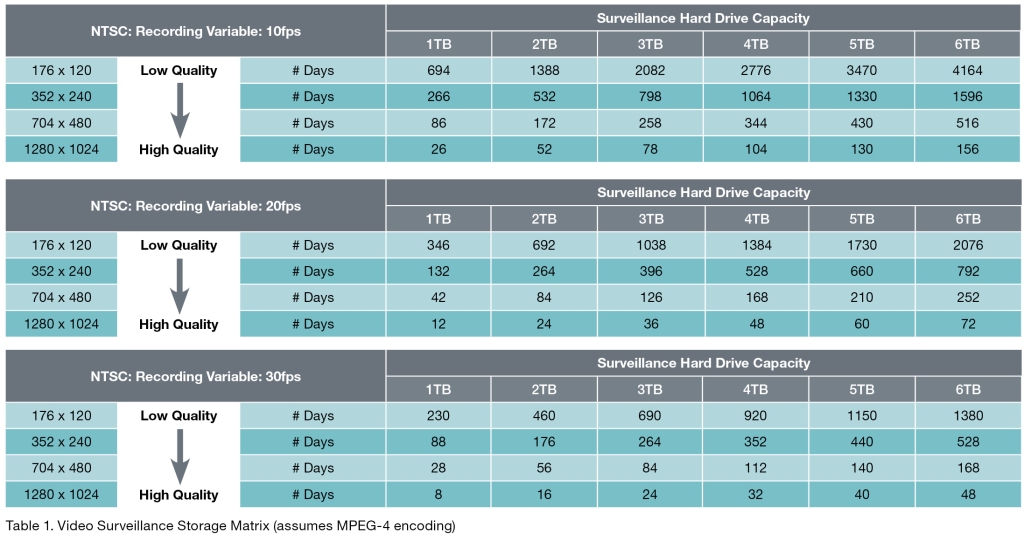The smart security camera can store and cascade enormously high-resolution video to help you to keep your eyes on what is happening around your home, and the stored videos mean that you can look at that activity whenever you want.
Local storage of a camera comes with a host of benefits, but you will need a MicroSD card. Now the question arises: what size of MicroSD card do you need and how much footage you will store as well. The footage storage can be differing from camera to camera, but you need to consider several things.
Resolution Vs. Time: When you decide how much storage capacity you need, you must consider the resolution and recording length. The lower resolution video takes more inadequate space than the higher resolution video but at the expense of clarity. The most common explanation for the modern security camera is 1080p or 1440p, called 2K or 4K. You can make out more detail in 2K video in 1080p than 4K video in 1440p footage, which depends upon the brands, and you may have the option to store footage at a lower resolution to maintain space into your memory card.
Many security cameras offer options for continuous recording, and you will still get notifications of motions and activities around your home, but it will record each minute of each day. This will need more storage space in comparison to the event recordings.
Frame Rate: Another essential feature is frame rate. That video that takes 30 frames per second (fps) requires less space than those videos that take 60 fps. Not all the cameras will allow you to adjust the fps of recording, so you will receive better footage of a higher frame rate, which may be affected by the lighting conditions. For example, some cameras will shoot 15 fps because of the lower light situation but revert to their default 30 fps when the light conditions are good.

On the other side, when you choose to record high-resolution recording, your storage requirements will be huge, and you need a standard SD card. And at that time, you must select a security camera that offers network-attached storage (NAS) as an option because you will be able to attach an external hard drive.
Codec and Compression: A codec is a type of encoding software that encodes the digital footage into that language in which the computer can read and store. There are a few kinds of codecs, and each store video and audio at a different rate and a different storage size. Examples of codecs are H.264 and HEVC.
Compression is another feature. All videos do not store in their original size. In maximum cases, compression takes less space on a memory card and the hard drive, and the Compression algorithm used by the security camera when you are going to play video in a significant role in how much memory footage is required.
How much space is required by a security camera?
Eufy 2K Pan & Tilt Camera: This one minute of 2K resolution footage takes 40MB space. According to that, around 2.4GB per hour and about 57.6GB per day when you record continuously.
When you need event recording and assume six events per day with two minutes of recording each, then that is only 480MB per day.
Wyze Cam Outdoor: In this one minute of video takes 5MB space. According to that, around 30 minutes of video takes 255MB space and 450MB for an hour and about 10.8GB per day when you record continuously.
What size storage should you buy?
Although you can search in MicroSD card and SD cards up to 1TB in size, a 256GB memory card will be enough for some days worth of footage in most cases. With the highest capacity requirements, a 256GB memory card will store around 4.5 days worth of footage when you record continuously.
A considerable majority of the security cameras use rolling space, which means that the old clip will be erased or replaced when the cards are filled. In many cases, you do not need to erase the footage manually to make space for more. When you want to archive clips, you will want to look into the system that offers you an external hard drive.
They are more affordable when you are looking at the cost per gigabyte rate, making them more cost-efficient when you intend to store all your footage for an extended period. One concern about using the local storage option is that there is the possibility of failure just because everything goes wrong due to tear and wear; hard drives and memory cards are no exception. Some companies offer recovery services that can rescue the footage that would otherwise be lost.
Blanche Harris is active in creative writing for years. His engaging and informative blogs and articles can be seen in various popular websites, e-magazine, and blogs. He also covers technical aspects of blogs and content related to webroot.com/safe to enhance users’ experience.